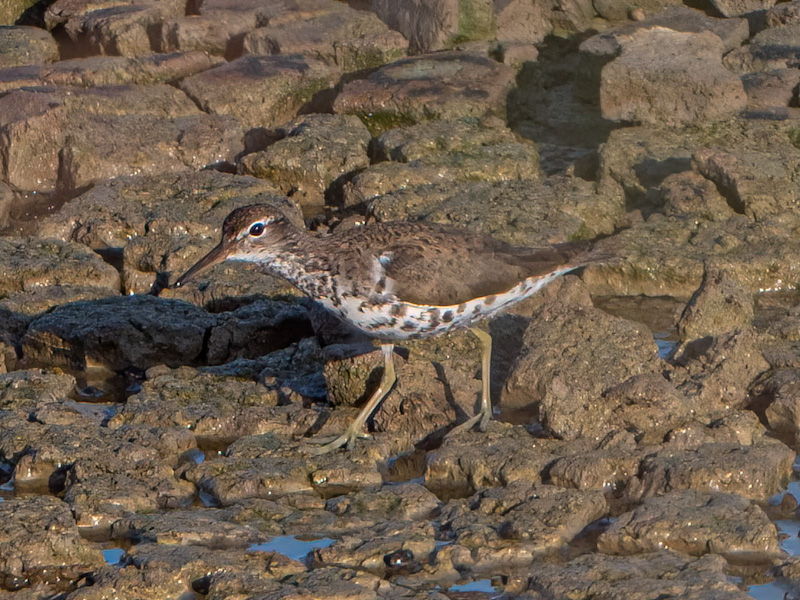
Common Name: Spotted Sandpiper
Scientific Name: Actitis macularius
Description: Adults have short yellowish legs and an orange bill with a dark tip. The body is brown on top and white underneath with black spots. These spots vary in degree over the course of spotted sandpipers’ lives, becoming especially prevalent around the breeding season. The overall health of spotted sandpipers may be suggested by the “spottiness” of an individual. Spotted sandpipers also feature a white supercilium. Non-breeding birds, depicted below, do not have the spotted underparts, and are very similar to the common sandpiper of Eurasia.
Distribution: Their breeding habitat is near fresh water across most of Canada and the United States. They migrate to the southern United States, the Caribbean, and South America, and are very rare vagrants to western Europe.
Habitat: Their breeding habitat is near fresh water.



